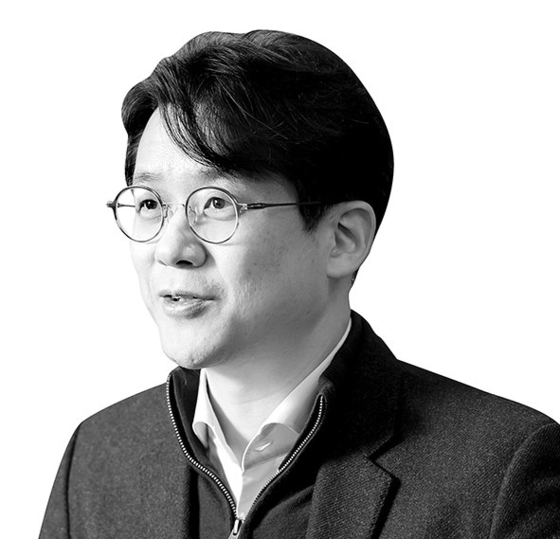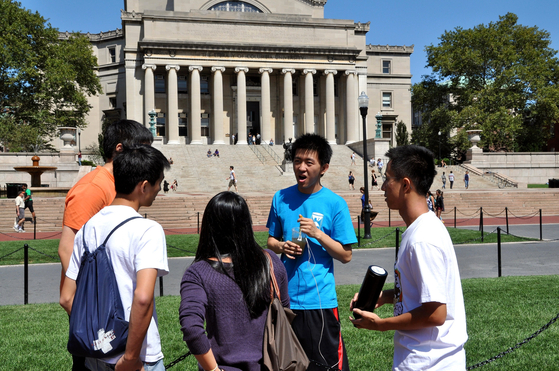The dilemma Korean students face in U.S. colleges

Hyuncheol Bryant Kim
The author is a professor of economy and public policy at Hong Kong University of Science and Technology.
I was born in Korea. But I was not afraid of asking questions to teachers nor was I submissive to them. When I raised an issue with their unreasonable treatment of me, I received corporal punishment. When I met my middle- and high-school friends I hadn’t seen in years, we often recollected our school days of barbarity. When I became a medical student, I was warned by trainee doctors to “stay quiet” when I asked a provocative question to professors. After I changed my course to economics — and criticized the weak points of an argument at a seminar hosted by the Department of Economics at a graduate school — the presenter and other students felt uncomfortable. In the ivory tower designed for heated discussions, only “polite” questions were allowed.
After I went to study economics at Columbia University for a doctoral degree, a whole new world unfolded before my eyes. My aggressive raising of issues and persistent questions suddenly became a virtue. In the meantime, most of the students from Asia kept silent without posing any challenges to professors’ sublime academic authority. The teachers praised me for “not behaving like other Korean students” and later helped me get a job as a professor in the United States.
I wondered why the professor praised me at that time. After I became a professor, I knew why — after listening to American professors’ quite candid explanations. “Foreign students from East Asia — specifically, from Korea, China and Japan — can solve given problems brilliantly and serve as research assistants faithfully, but that’s it,” a professor said. “What is required for research is critical thinking about existing research and unfurling your creativity. But most Korean students lack such qualities.”
A story a renowned American professor told me was quite shocking. When he underwent a doctoral course at a prestigious university, one of his peers was a “genius” from Korea. He always showed unrivalled test scores in all subjects. Before his arrival at the university, the school had classified doctoral program students’ scores in comprehensive exams into “Pass” or “Fail.” But after he joined the school, it had to create the unprecedented “High Pass” category.
But a problem surfaced when the excellent student was preparing for his doctoral thesis. He had to find a research subject on his own, but he couldn’t — despite his marvelous ability to solve given questions. He quit the doctoral program after declaring, “I’m not an ingenuous person fit for research.” The episode could be an extreme case, and yet happens to many Korean students studying in the U.S.

During the Covid-19 pandemic, countries’ attitudes toward critical thinking showed clear distinctions. Governments around the world got deeply involved in people’s daily lives. When their autonomy is threatened, rational citizens are supposed to ask why. But Koreans simply blamed rule breakers rather than asking why they must follow draconian mitigation rules. As a result, Koreans took off their masks later than any other peoples and shut down schools for the longest period of time, unnecessarily. Why did it happen?
Economists pay attention to innovation and entrepreneurship. Creativity is an abstract concept very difficult to gauge. However, innovation can be measured by the quality and quantity of patents — and entrepreneurship also can be calculated by the quality and quantity of startups. But if creativity fails to prompt innovations or start-ups, it’s nothing but an illusion.
Economists at the University of California, Berkeley and the London School of Economics and Political Science found that “smart and illicit” people are more likely to become entrepreneurs than others. Those who were called “troublemakers” when they were young will become innovators more than others, if they are smart, too.
Regrettably, however, Korea is busy producing “model students” — mostly conformists far removed from innovation. After teaching at Cornell University for eight years, I have been lecturing at the Hong Kong University of Science & Technology since 2020. I met many U.S. students and others from Europe, South America and East Asia, as well as students who studied at international schools around the world.
I present students with diverse proofs scrutinized by the science of economics. They are required to take the class with a critical perspective, above all. They must debate the credibility of what I taught them, find a problem with a certain issue in their own country, and present solutions.
In my class, students from the United States, Europe and South America are more proactive — and think outside the box — than their East Asian counterparts. They don’t blindly subject themselves to professors’ authority, either. Also, Asian students rarely develop social skills to get close to their professors even though they still get higher scores in exams than their peers from other regions.
The World Development Report to be published later this year deals with how midlevel-income countries advance to developed ones through “creative destruction.” I met a World Bank team who travelled to Hong Kong via China last month to answer the question. Members of the team were trying to find a fundamental answer to why China cannot succeed in innovation even after its remarkable success in achieving economic growth through imitation.
Our discussion centered on China’s education system and authoritarian society. Chinese education is infamous for enforcing rote learning and extreme competition. Chinese people can hardly criticize their authoritarian government, either. As a result, their thinking stiffens with little room for an outburst of ingenuity. We discussed how to raise creative elites first, as they would be no need for all 1.4 billion Chinese to be smart.
A research team led by Prof. Raj Chetty at Harvard University traced the lives of 1.2 million innovative inventors. It was a large-scale research project combining all the data from the U.S. Patent and Trademark Office, the Internal Revenue Service and the New York City Department of Education. It turned out that most innovators were born into families above the level of middle class. In families with income of the lower 50 percent group, inventors accounted for less than one percent. But in the top one percent in the family income, the possibility of its members becoming inventors was 10 times higher than the lower income group. The gender gap was also remarkable, as 82 percent of inventors were male.
The most important finding of the research is that such a gap results from environmental differences than from innate abilities. For instance, among people with similar math scores during primary school days, the possibility of becoming inventors varied greatly depending on their family income. If a person is born into a family or a neighborhood, where a technological innovation in a certain field took place, he or she will become an innovator in that field more likely than otherwise, suggesting that the qualities for innovation are handed down to the next generation through the so-called “network effect.”
Such research results imply that many members of low income families — and women — could have been inventors if they had been exposed to innovation during their school days. A state’s role is to find out pearls in the mud early on so that they can contribute to society later.
A nation must establish a system which enables the acceleration of innovation, starting with reducing risks from launching startups. For example, France in 2002 introduced a system that hands out unemployment benefits up to three years if startups fail. As a result, 9,000 to 24,000 new jobs were created annually in the country thanks to an exponential increase in startups.
Funding for research for innovations also should be improved. Research funds have usually been provided on a single-project basis in Korea. The evaluation period is not only short, but failures are not pardoned, either. The Howard Hughes Medical Institute, a nonprofit organization, funded research projects for a minimum of 10 years to allow free research regardless of their failures. The institute discovered that those researchers made even greater academic achievements than other groups.
The time has come to end Korea’s rigid system of forcing students to blindly revere authority. Innovation can gain traction only when society allows individuals to fully demonstrate their potential and raise an issue with various social problems. Innovation accelerates when the government protects creative individuals and quietly helps them.
Don’t be afraid of becoming troublemakers. Ask bold questions and bravely challenge authority. That helps innovate society and advance a country.
Translation by the Korea JoongAng Daily staff.










with the Korea JoongAng Daily
To write comments, please log in to one of the accounts.
Standards Board Policy (0/250자)